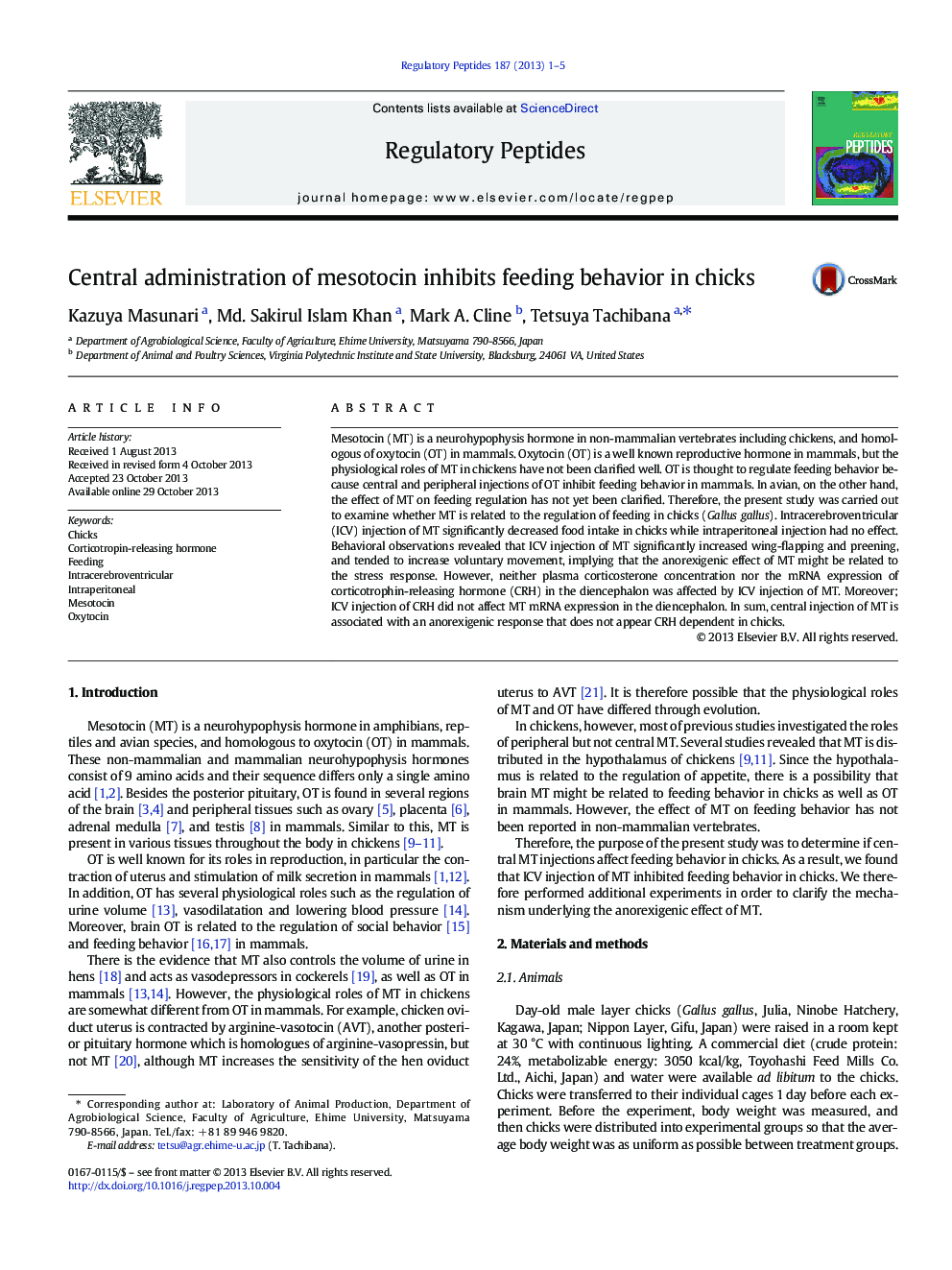| Article ID | Journal | Published Year | Pages | File Type |
|---|---|---|---|---|
| 2022452 | Regulatory Peptides | 2013 | 5 Pages |
•Central but not peripheral mesotocin inhibits feeding behavior in chicks.•Mesotocin also induces wing-flapping and preening behavior.•The anorexigenic effect of mesotocin might not be related to corticotrophin-releasing hormone system in the brain.•The effect of mesotocin on feeding in chicks is similar to that in mammals, at least when administered centrally.
Mesotocin (MT) is a neurohypophysis hormone in non-mammalian vertebrates including chickens, and homologous of oxytocin (OT) in mammals. Oxytocin (OT) is a well known reproductive hormone in mammals, but the physiological roles of MT in chickens have not been clarified well. OT is thought to regulate feeding behavior because central and peripheral injections of OT inhibit feeding behavior in mammals. In avian, on the other hand, the effect of MT on feeding regulation has not yet been clarified. Therefore, the present study was carried out to examine whether MT is related to the regulation of feeding in chicks (Gallus gallus). Intracerebroventricular (ICV) injection of MT significantly decreased food intake in chicks while intraperitoneal injection had no effect. Behavioral observations revealed that ICV injection of MT significantly increased wing-flapping and preening, and tended to increase voluntary movement, implying that the anorexigenic effect of MT might be related to the stress response. However, neither plasma corticosterone concentration nor the mRNA expression of corticotrophin-releasing hormone (CRH) in the diencephalon was affected by ICV injection of MT. Moreover; ICV injection of CRH did not affect MT mRNA expression in the diencephalon. In sum, central injection of MT is associated with an anorexigenic response that does not appear CRH dependent in chicks.
